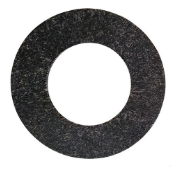The friction pads of the chain hoist are the core components of the braking system. Although they are not as visually visible as lifting chains, manual chains, and casings, they play a crucial role in ensuring braking safety. It is built into the hood of the chain hoist, located on both sides of the ratchet wheel. During operation, it is driven by the kinetic energy of the hand pull to approach the ratchet wheel, thereby achieving a deceleration and braking effect. Due to its hidden installation characteristics, it is difficult to detect in a non disassembled state. Therefore, clarifying the detection cycle of the friction plate has become an important part of ensuring the safe operation of the chain hoist.

1、 High frequency homework scenario: Must be checked before each use
If the chain hoist is in a frequent lifting operation state, from the perspective of safety regulations, a special inspection of the friction plate must be carried out before each operation. The integrity of the braking system is the primary line of defense to ensure the safety of the operator's life. High frequency use will accelerate the wear of the friction pads. Only through careful inspection before each operation can the degree of wear be timely grasped. If the wear is found to be close to or exceed the safety threshold, new friction pads need to be replaced immediately; If the wear is minor and there are no abnormalities, the operation can be started.
2、 Low frequency homework scenario: regular+double check before use
Some chain hoists may be idle for several days or even months due to low operational requirements, resulting in a 'box bottom' state. In this case, even if the natural wear of the friction plate is low, the potential impact of environmental factors cannot be ignored: humid environments can easily cause the friction plate to rust, and dust impurities may invade the interior of the cover and adhere to the surface of the friction plate, which will directly reduce the sensitivity of the braking system and even cause safety hazards.
Therefore, for the friction plates of idle chain hoists, a dual mechanism of "regular maintenance and testing+special testing before use" needs to be established: every half month to one month, even if not in use, the condition of the friction plates should be checked by opening the box, removing any possible impurities, and confirming that there is no rust; Before each reactivation, it is necessary to conduct targeted testing again to ensure that the friction pads are normal and the braking function is normal before putting it into operation.
3、 Core principle: Detection as a safety net
Whether it is high-frequency use or long-term idle, the detection of friction plates in chain hoists is not an "optional action", but a "necessary prerequisite" to ensure equipment safety and personnel safety. Only through scientific and timely testing, can potential problems with friction plates be detected and eliminated in advance, so that every lifting operation can have a safety net and truly achieve safe operation.